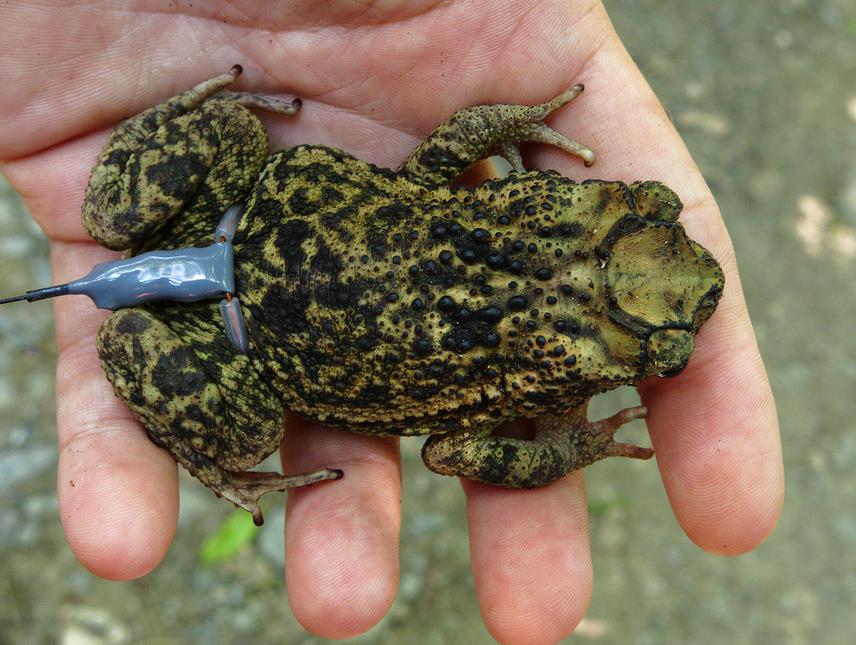Miguel A. Landestoy T.
Survey amphibian communities in a northwestern locality, the known range of a critically endangered toad species not seen since 1971. Discover little-known information on the natural history of this and related species. Sample for Chytrid fungus.

RT Female P guentheri.
The project started in April of current year when we began making contacts and arrangements with environmental authorities and local inhabitants, including villagers, farmers, landowners, and rangers at the wildlife reserve that forms part of the study area.
The project's objectives are to fill in a lack of knowledge on natural history of the native toads of the island, with particular attention to the Hispaniolan Crestless Toad, Peltophryne fluviatica. We wish to document native toads’ ecological interactions with introduced species; record potential impacts to their habitats; and sample for the often lethal Chytrid fungus (Bd), which has been little studied in this country. Collecting such basic knowledge is mandatory in order to take action toward conservation efforts for this poorly known and increasingly threatened amphibian group.
While visiting the areas we will also take advantage of the opportunity to document anuran, avian and invertebrate species (with collaboration of local specialists) in the type locality of the most threatened of all the toad species. We have started to train personnel at the Refugio de Vida Silvestre Furnia de Gurabo, in order to prepare them for further surveys and managing.
Pitfall traps have been placed around the reserve and have proven to be efficient, also allowing us to handle animals and put the reserve personnel in direct contact with key species. Field gear has been delivered to the wildlife refuge to start the data gathering (cameras, flashlights, radios, field notes, binoculars) and data loggers have been installed to monitor two relevant weather components, air temperature and relative humidity. Qualitative data is being gathered regarding rainfall and river flow.
Chytrid fungus sampling will be carried out in collaboration with foreign specialists who will analyze the samples, and contribute their findings to our reports. With the aid of radio-tracking and marking and recapture methods, we will get a better picture of the abundance and habitat use of anuran species in the study sites.
Also important are captive breeding initiatives locally. Besides natural history data, environmental information will be collected (water temperature, conductivity, salinity and pH level measurements) to help assure better ex-situ conditions for captives.
The Refugio de Vida Silvestre Furnia de Gurabo has been described as having unique geological features and bears a rich fossil fauna. Thousands of scaly-naped pigeons migrate daily to the refuge to consume its fossil minerals, a remarkable attraction. Together with these already known values, and others overlooked, we aspire to use our presence in the region to promote sensitive and sustainable tourism and increase study of the remarkable biodiversity it contains.